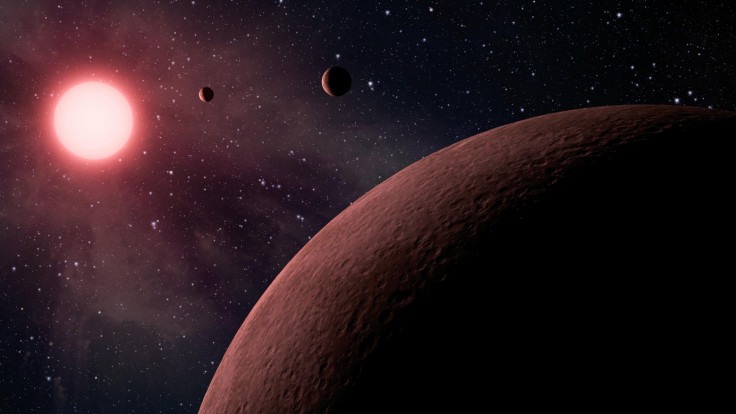Scientists find evidence of exomoon 'as big as Neptune' for the first time
Moon attached to one of the Kepler system's 'warm planets'.

Scientists from Columbia University might have stumbled upon what could be the first ever sighting of an exomoon attached to planet Kepler 1625b.
Exoplanets are ones that are not part of the solar system, but orbit other stars. Spotting such a planet involves pointing a camera at a star and recording a dip in light coming from it, then studying the shadow caused by the planet going around the said star. The Kepler mission's primary focus is to spot and locate such exoplanets.
Exomoons could be, according to the paper published, spotted in the same way by looking for light reflected off a planet by a passing moon. The planet around which the exomoon might have been spotted is in the Kepler 1625 star system, called the Kepler 1625b, one of the so-called "warm planets", notes the study.
While the evidence is strong, scientists are yet to nail it down to an absolute certainty. In the published abstract, they have noted that the data collected "means it should be treated as no more than a hint at this time". The team has made three recordings of dips in light, suggesting a moon.
While findings show the possibility of an exomoon, the report notes that this "dimming" can be caused by other factors as well as being a fluke in the data.
Kepler 1625, the yellow star around which the planet 1625b orbits, is about 4,000 light years away, so the light that reaches the telescopes on board the satellite is already faint.
The paper published by the team comes before more data is collected by the Hubble Space Telescope, which can provide more clarity on what the scientists have detected. The report says that Hubble can either verify or discard this finding. However, it is not clear as to when this will happen.
If it does, in fact, turn out to be an actual moon, it will not only be the first ever recorded exomoon, it will also be the largest moon ever sighted. It will be as large as Neptune, and for a moon to be that big, it will have to be going around a planet that is likely as large as Jupiter, notes phys.org.
The sighting of a moon can, according to the abstract, be an important step towards establishing, "rich insights into planet formation theory and habitability". It has been argued that moons play an important role in creating life on their planets.
Earth's moon, according to a report by the Scientific American, could be the driving force behind not only stabilising the rotation of the planet, but also creating tidal waves that spurred the migration of life, spreading it across the globe. Exomoons might have a similar effect on their planets.
© Copyright IBTimes 2025. All rights reserved.





















